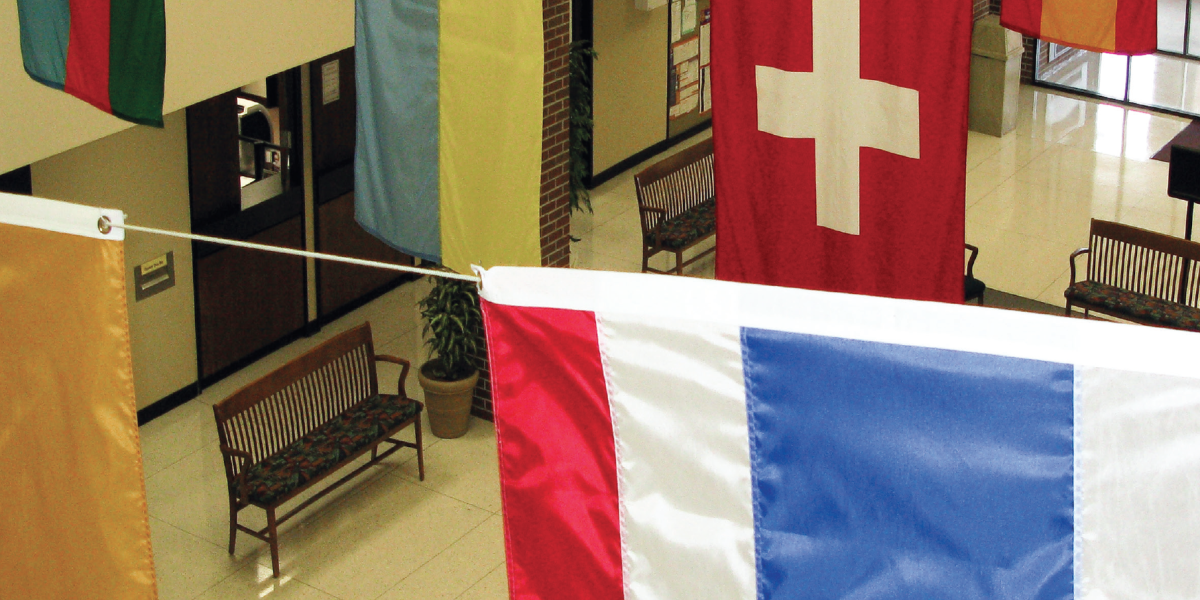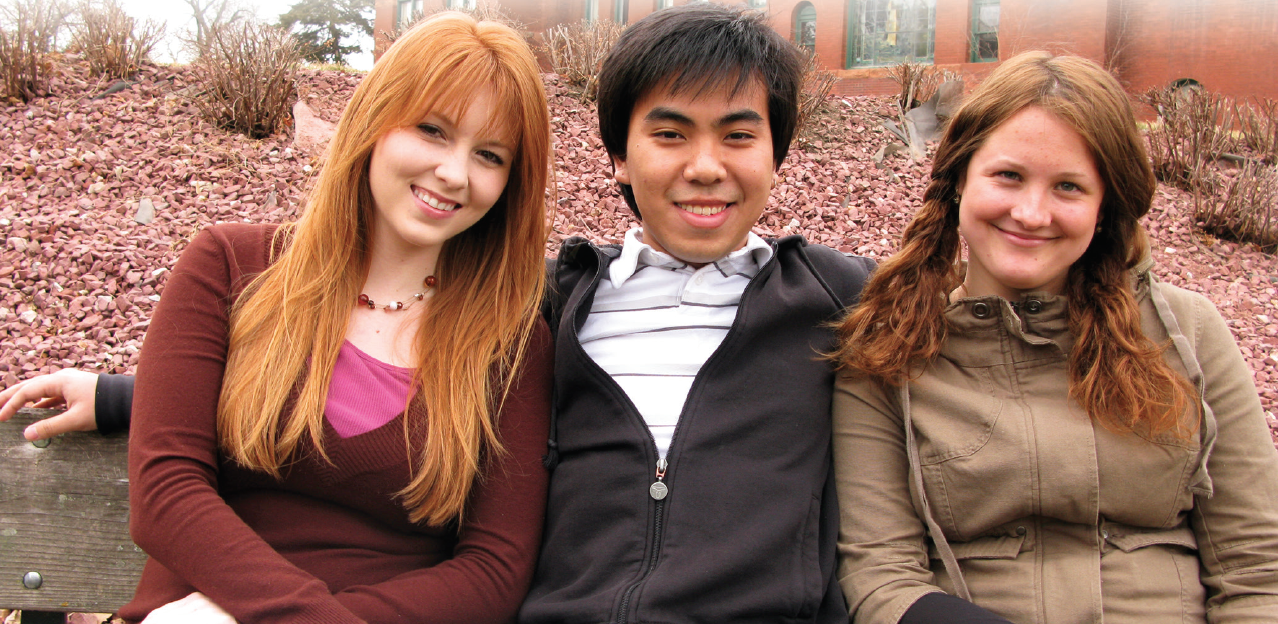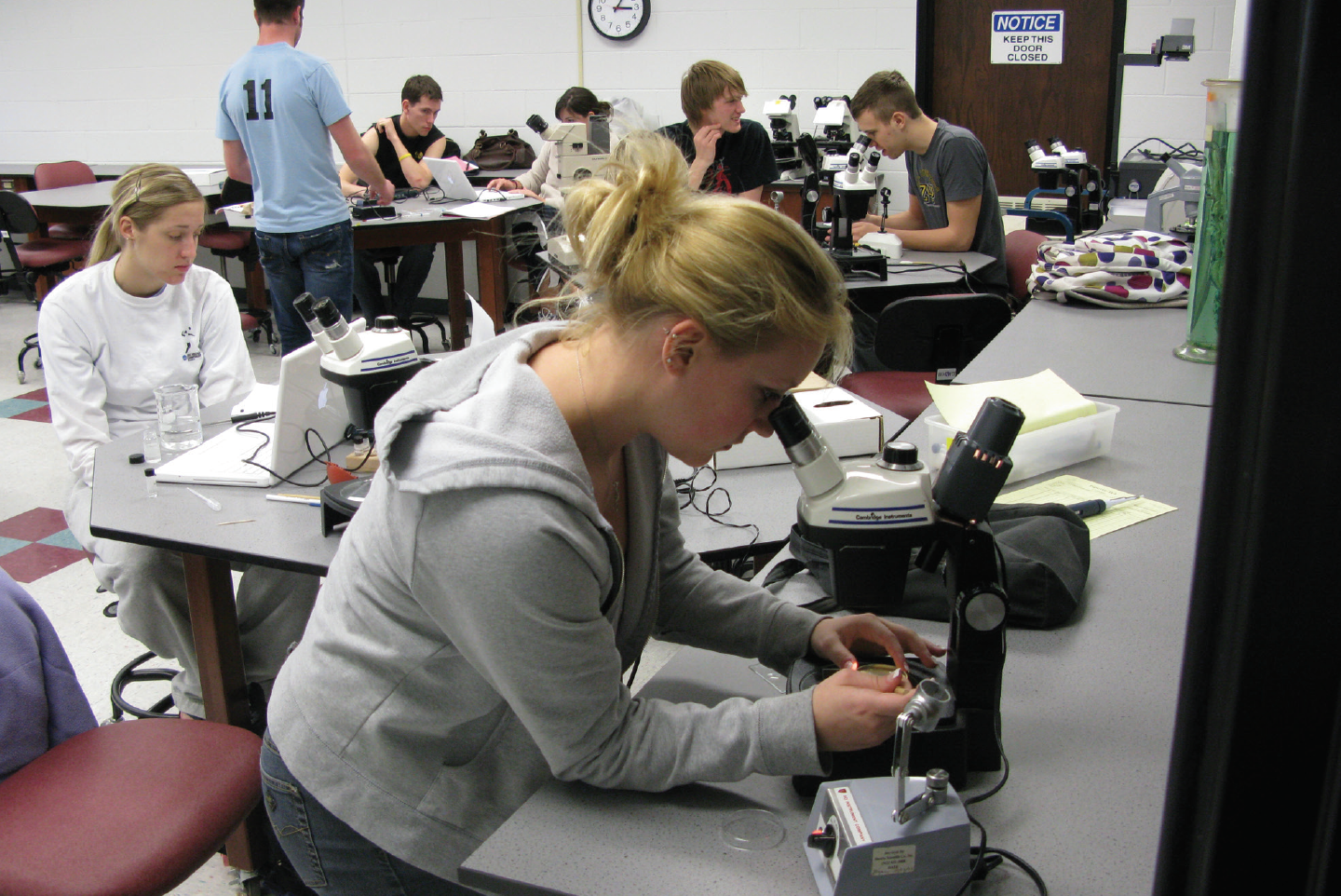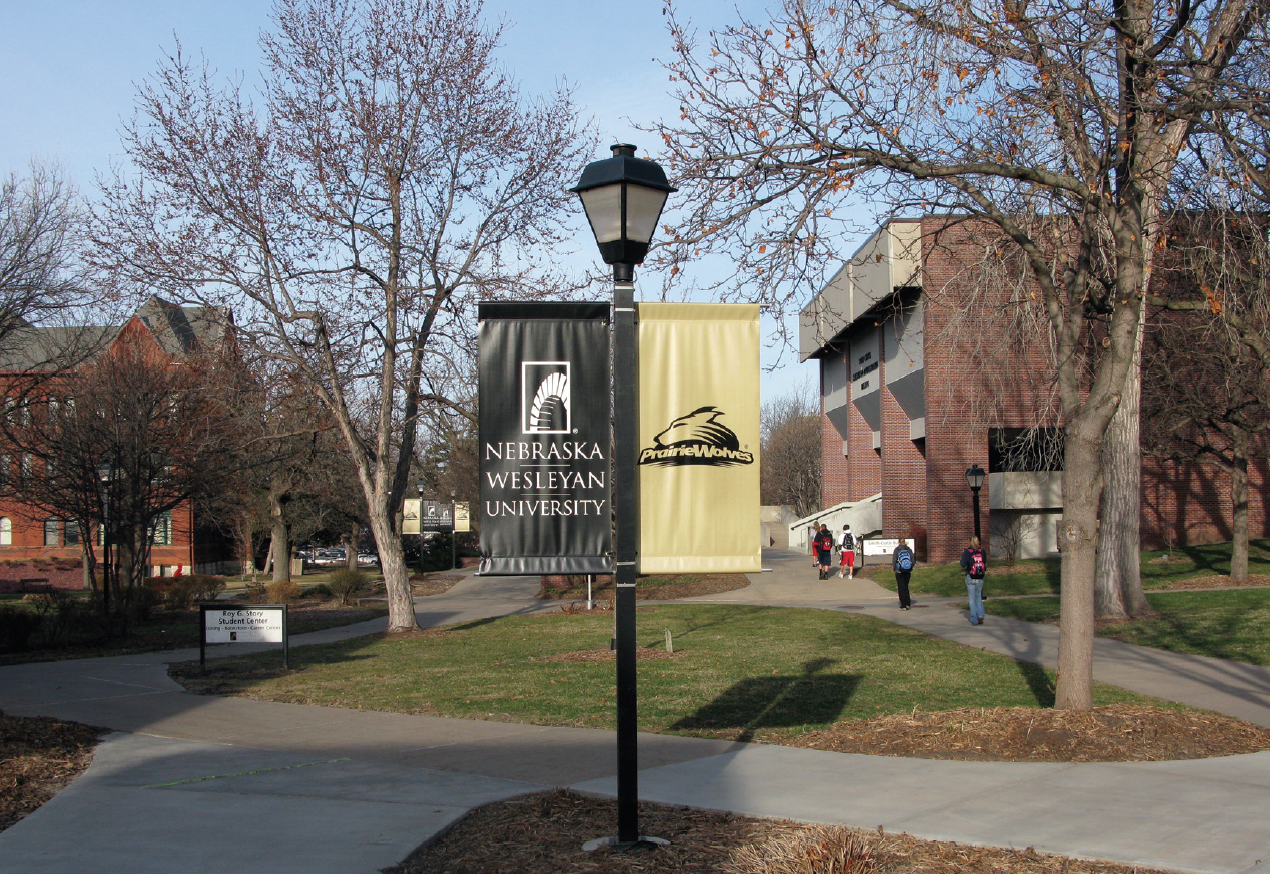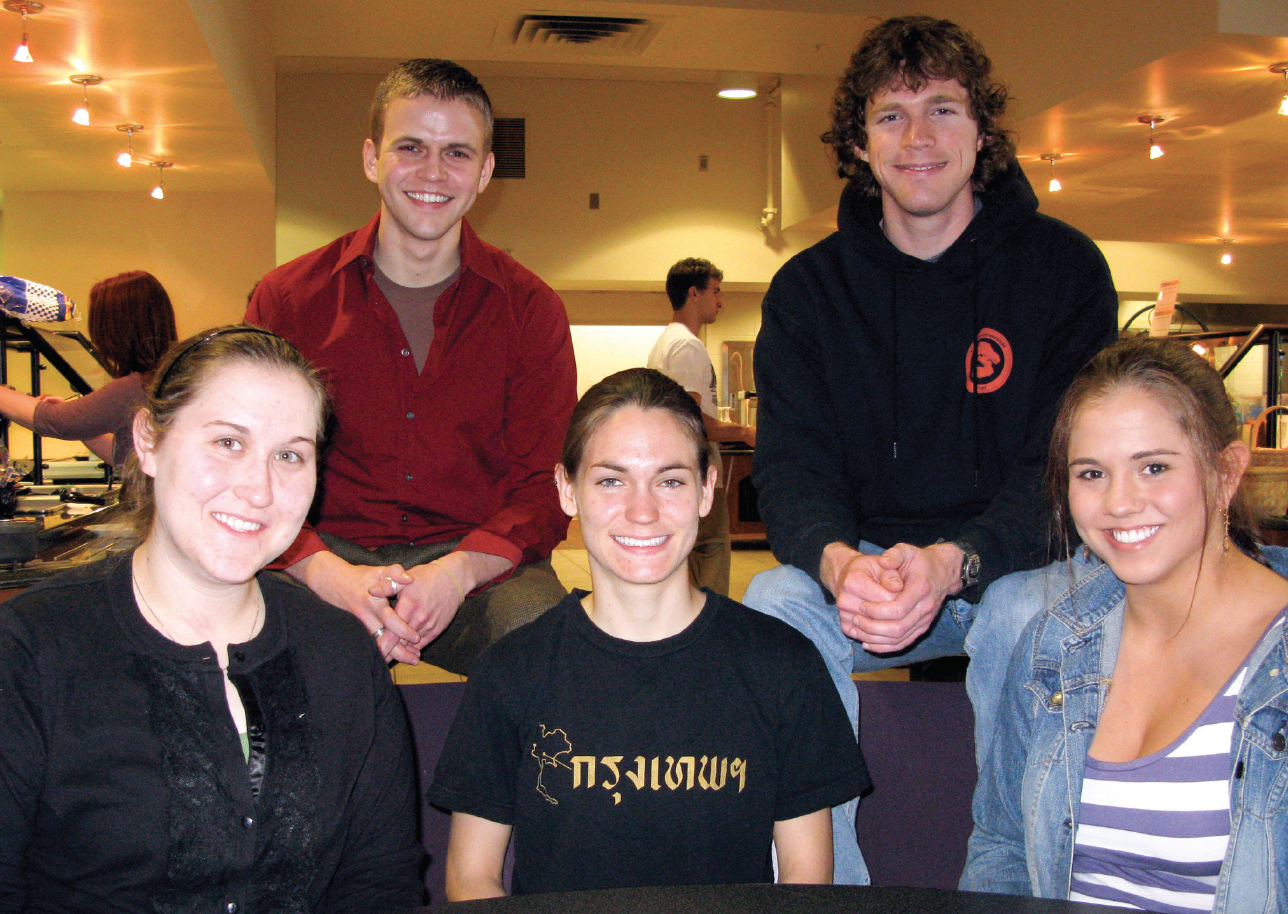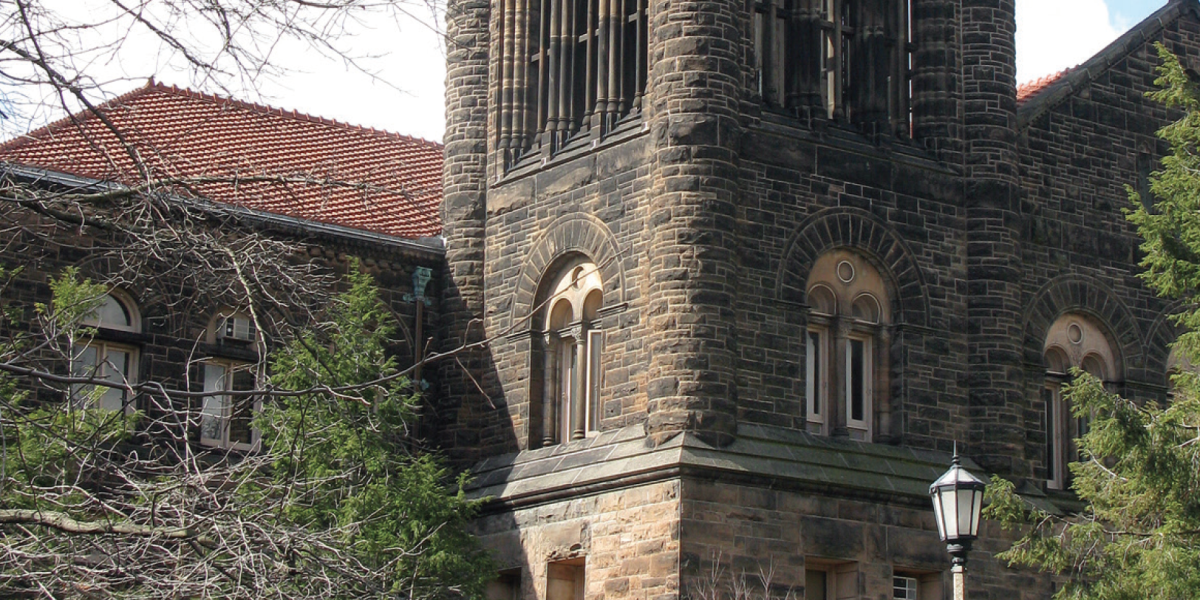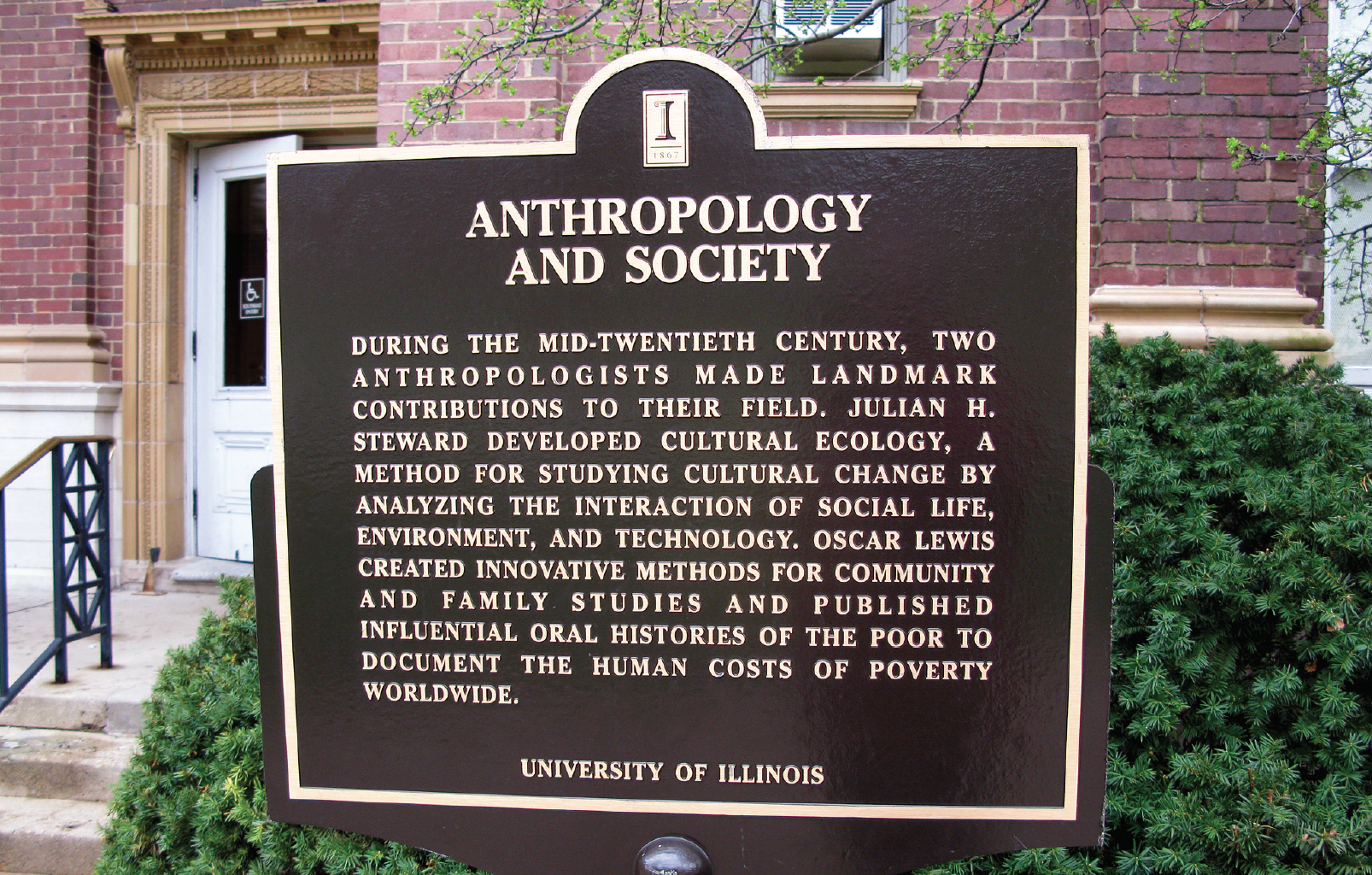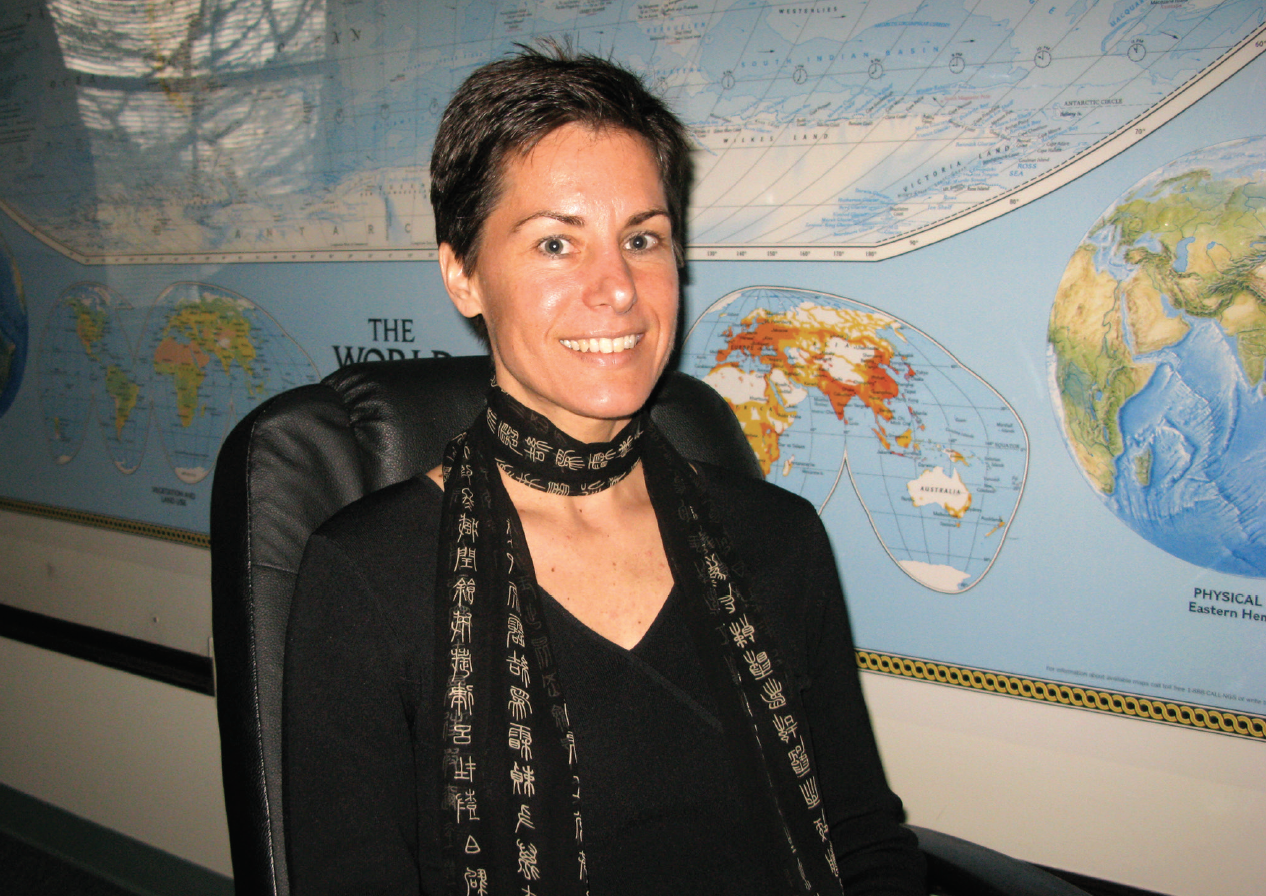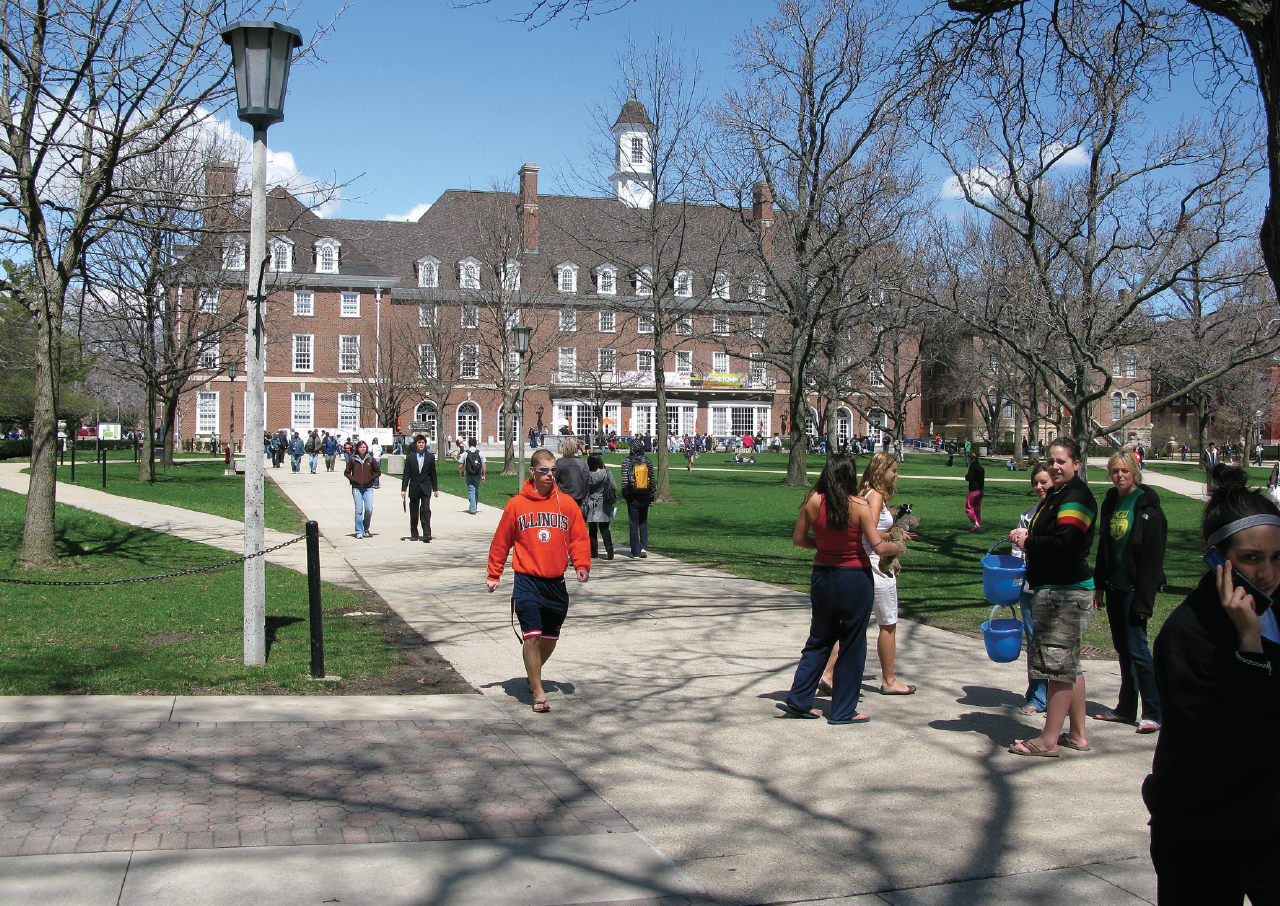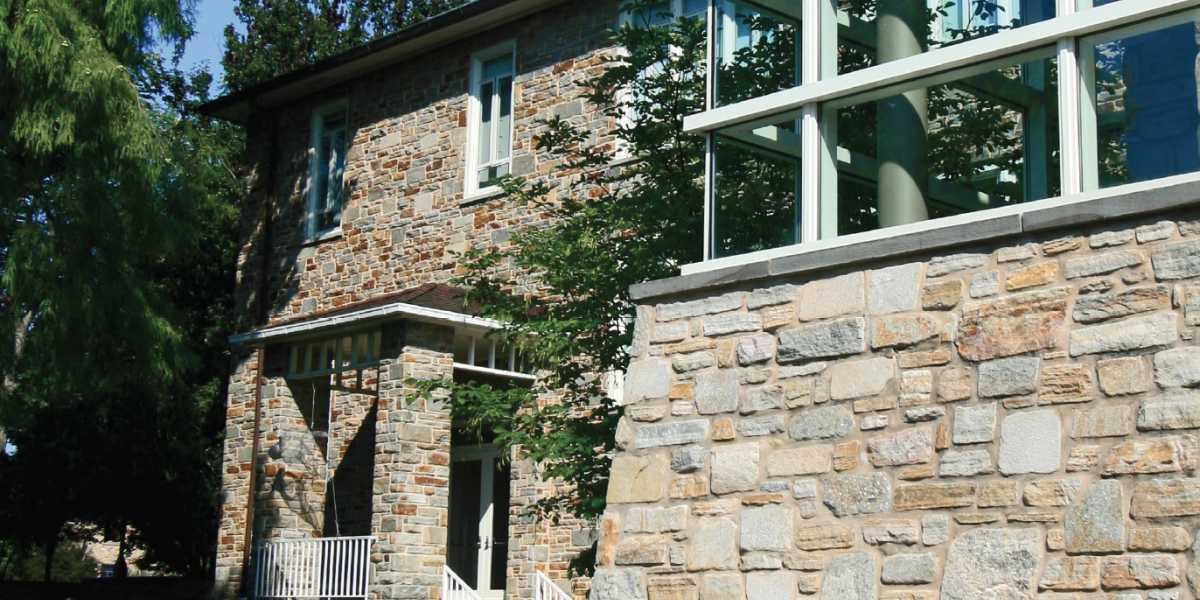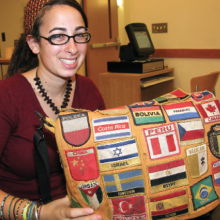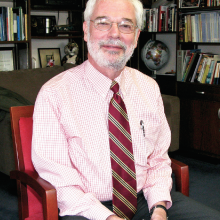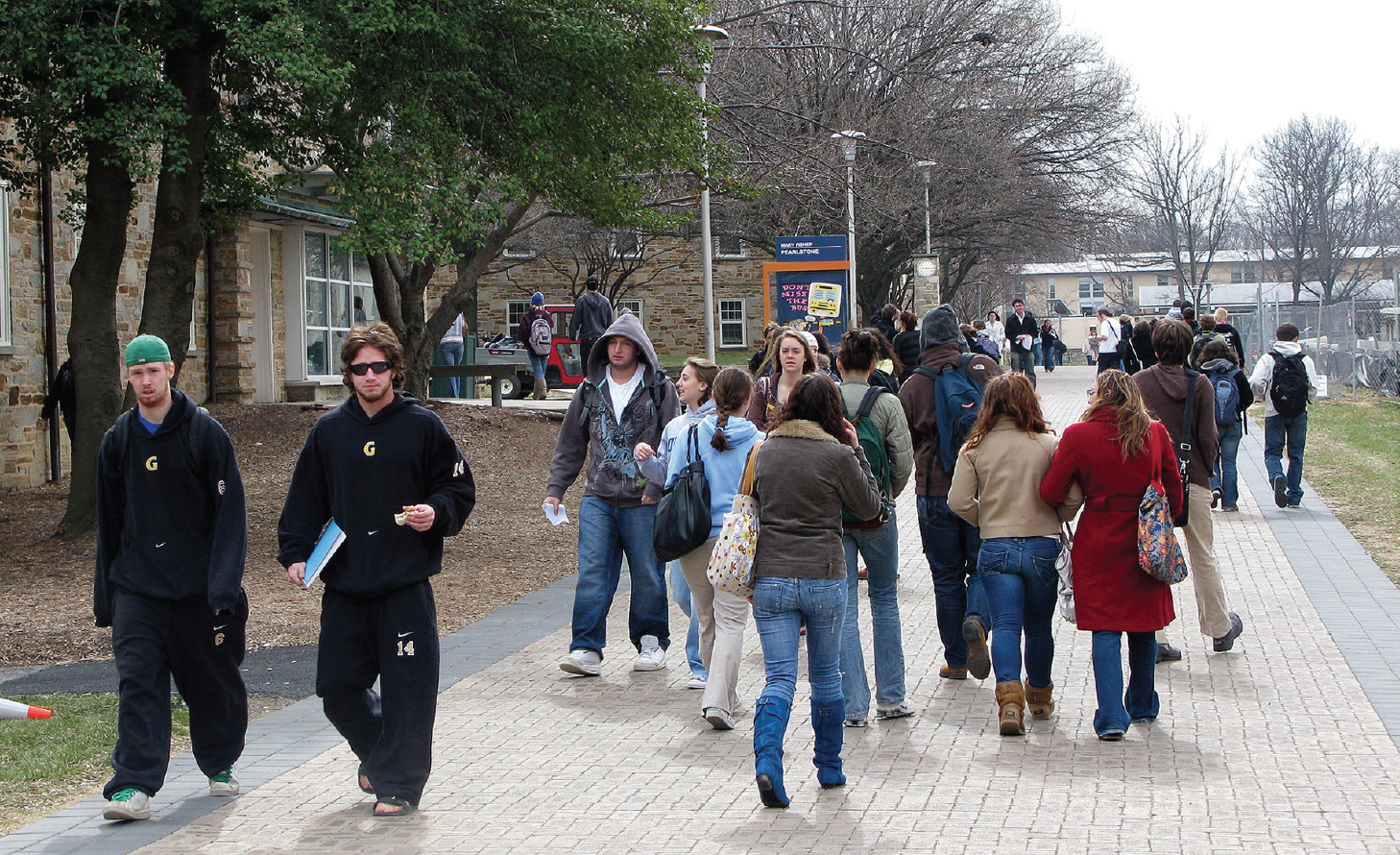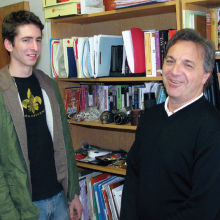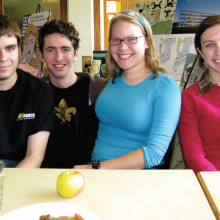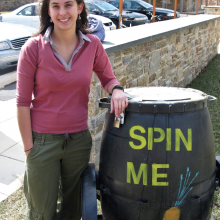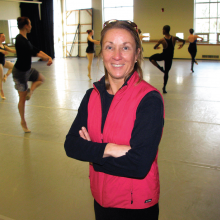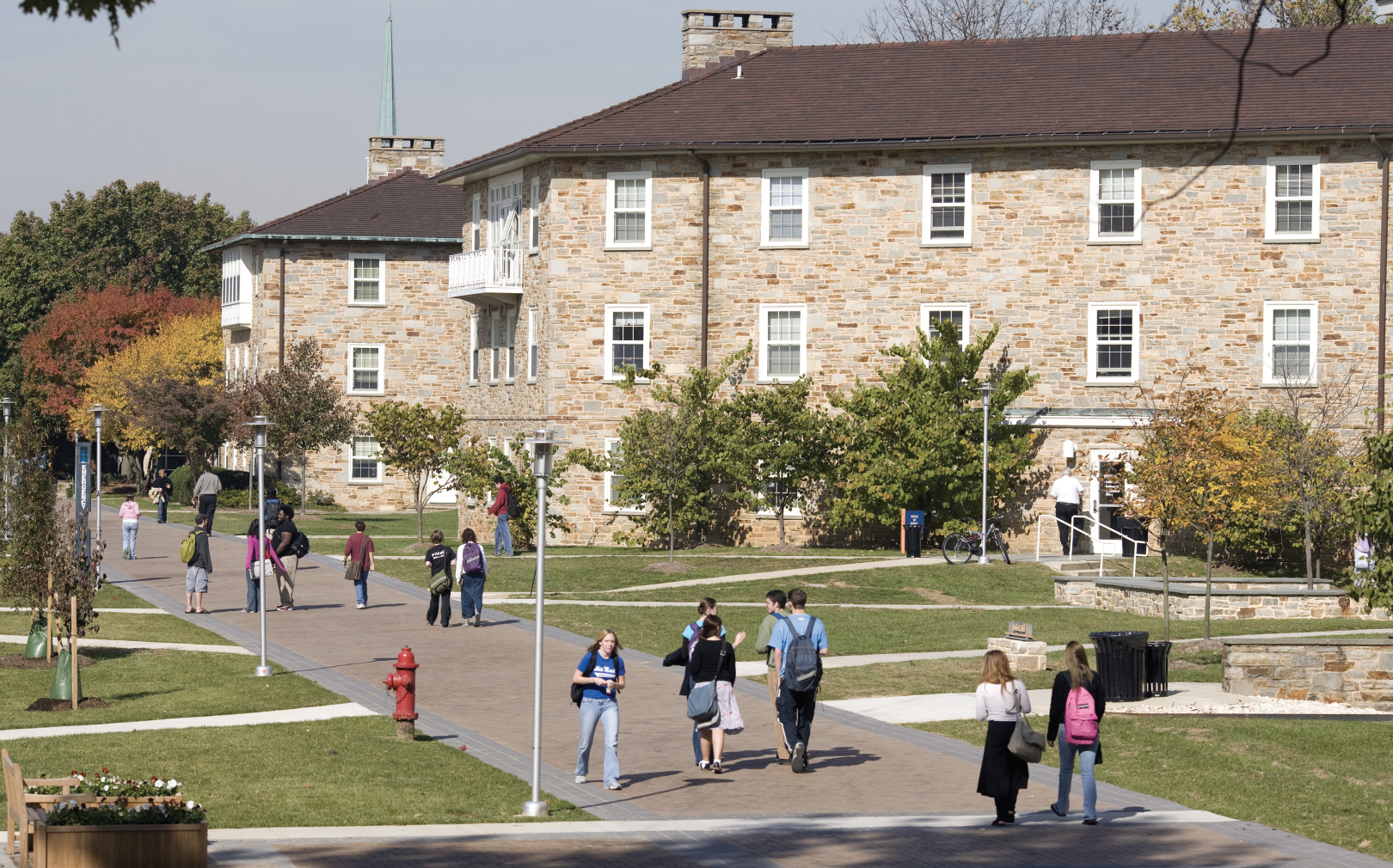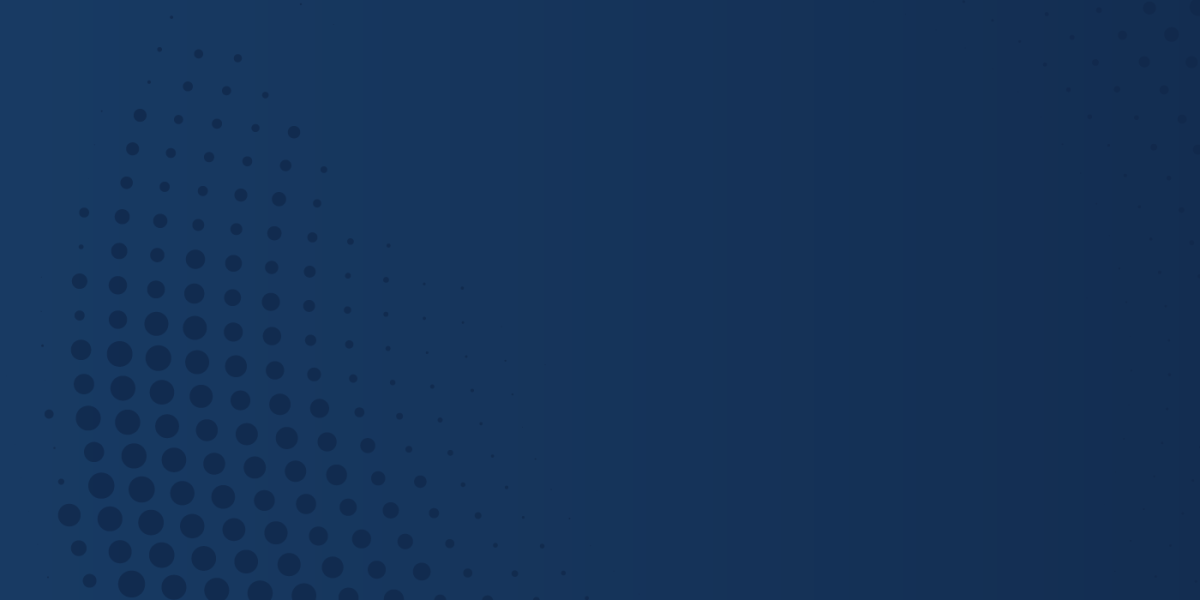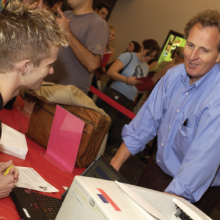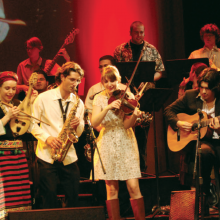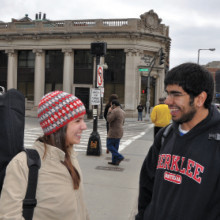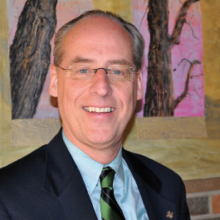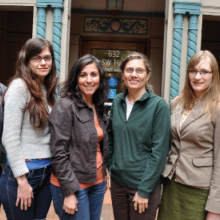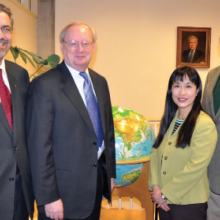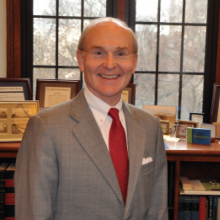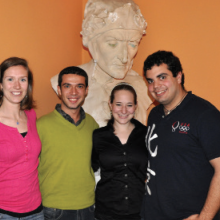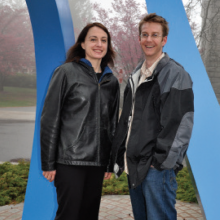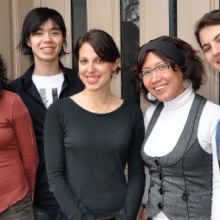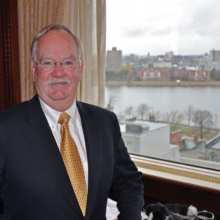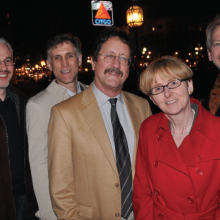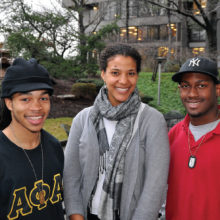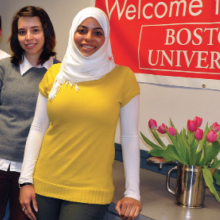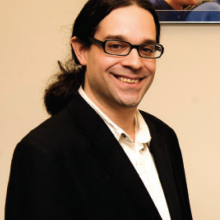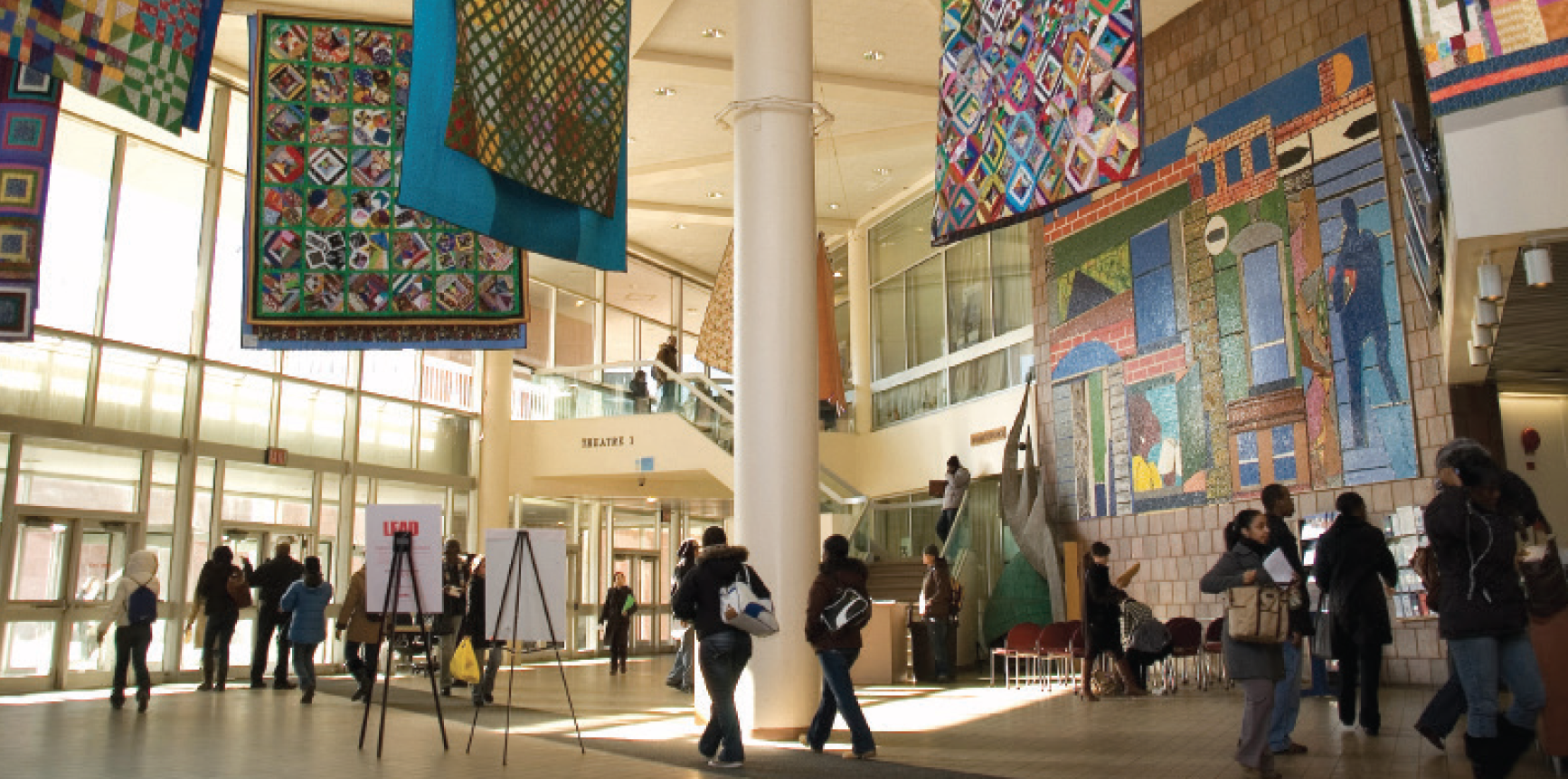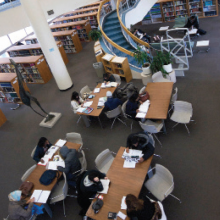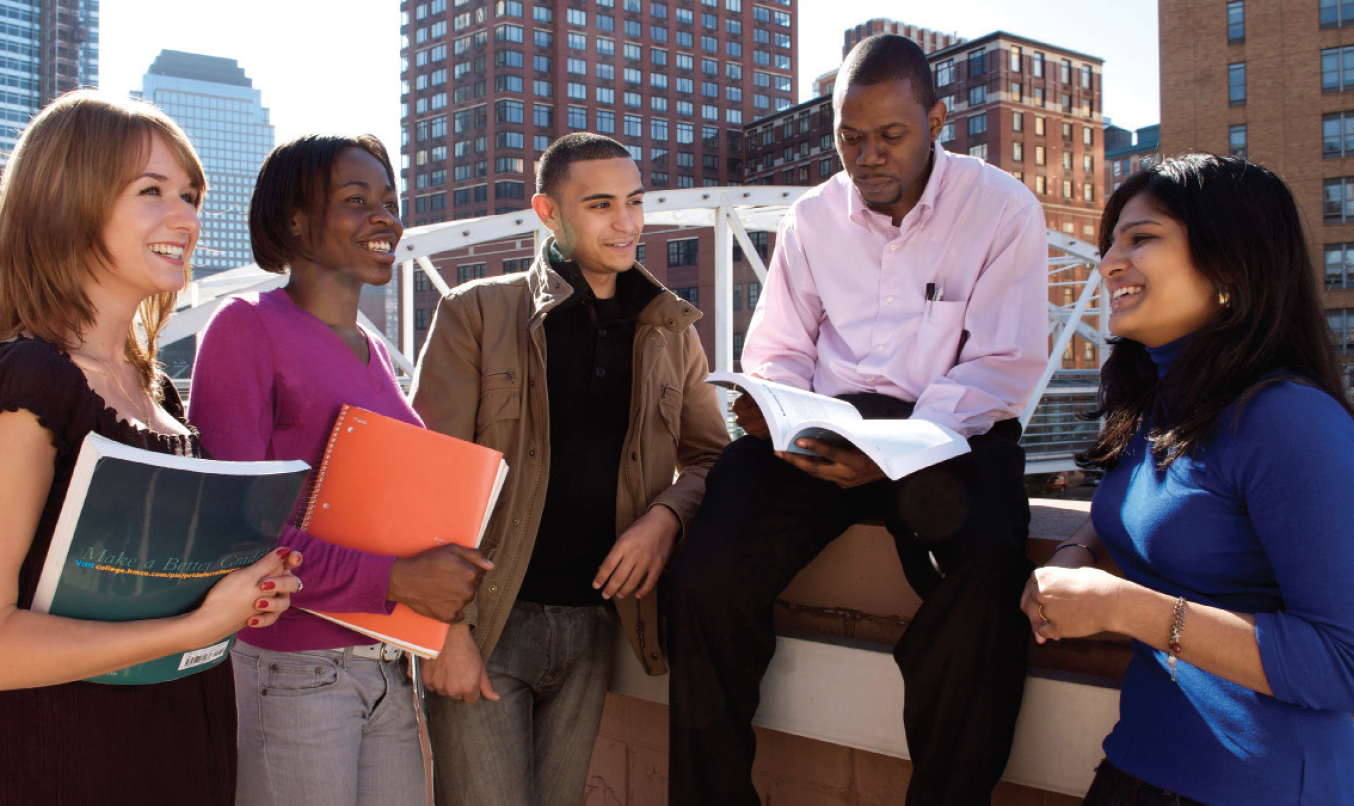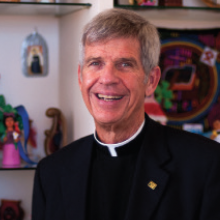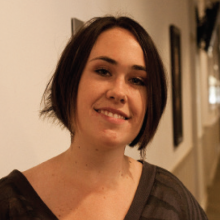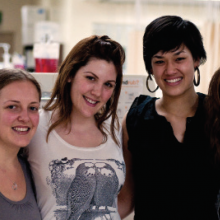2008 Comprehensive Nebraska Wesleyan University
If luck is the residue of design, it is no coincidence that Nebraska Wesleyan University has produced 21 Fulbright and one Rhodes Scholar since 2000. This “little college on the prairie,” as one professor calls it, does not leave these matters to chance. There is a national prestige scholarship adviser as well as a Fulbright program adviser who, along with a cadre of like-minded faculty colleagues, scout for talent in freshman seminars. They groom these students, ship them off to Washington for internships, and lead them on service and education abroad trips to Sri Lanka, Swaziland, and Panama—experiences that often provide fodder for the essays these young Nebraskans write for their Fulbright applications. Faculty help protégés polish those essays—one of the 2008 winners went through 20 drafts.
Nebraska Wesleyan pushes its faculty out into the world, too. It has a sabbatical policy that may be unique: faculty receive two-thirds salary on sabbaticals in the United States, but 100 percent if they spend that year in another country. “I know of no other place that does that,” said President Frederik Ohles.
Methodist leaders founded the liberal arts school a few miles from the state capital in Lincoln, Nebraska, in 1887, envisioning that it might grow as did another Methodist institution, Northwestern University, outside Chicago. Within a year they had erected the imposing, Colorado red stone and brick landmark known as Old Main. But “Nebraska didn’t develop quite like Illinois did,” said President Emeritus John White. It remained a primarily undergraduate college on a 50-acre campus tucked into Lincoln’s quaint University Place neighborhood, across town from the University of Nebraska-Lincoln, with almost as many international students (1,500) as NWU has undergraduates (1,600) in 2007. Nebraska Wesleyan, which remains affiliated with the United Methodist Church, also has 200 graduate students pursuing master’s degrees in nursing, forensic science, and historical studies. Though the college has gone through several mascots—the Sunflowers, Coyotes, Plainsmen, and now the Prairie Wolves—its brown and gold colors have remained constant.
When it comes to internationalization, NWU is an overachiever. “I suppose we don’t have some of the bells and whistles and amenities that we might have if we were a wealthy college,” said Ohles. “We make terrifically good use of all the resources we have. The faculty here are very busy. They’re teaching four courses per semester... The Great Plains go-getit done mentality is alive and well in Nebraska Wesleyan.” That mentality explains how political scientist Robert Oberst and a few colleagues won approval for an interdisciplinary Global Studies program in the early 1980s. Global Studies made it through only because “it didn’t cost any money. Everything had to be done by the seat of our pants,” said Oberst. He has led NWU students on numerous education abroad trips to South Asia and taught at both Peradeniya University in Sri Lanka as well as Cairo University, where he was a Fulbright lecturer. In its heyday Global Studies attracted 20 majors, although today it draws more minors than majors. Laura Reitel, an exchange student from the University of Tartu in Tallinn, Estonia, put Oberst at the top of her list of favorite professors. If possible, she said, “I would just stick him in my pocket and take him back home and show him to others. Our professors are not that amusing or anything like him.”
Fulbright Factory
If Nebraska Wesleyan has gained something of a reputation as a Fulbright factory, it is due to the efforts of such faculty as Oberst, Kelly Eaton, Gerise Herndon, and Elaine Kruse. Eaton, chair of the Department of Political Science and Nebraska’s Professor of the Year in 2003, said, “It is really the long-term nurturing and advising that produces the results in the end.” Eaton is the National Prestige Scholarship adviser. She worked closely with Xuan-Trang Thi Ho, who in 2006 won the second Rhodes Scholarship in NWU’s history. Eaton, who spent the past two years on sabbatical and then on leave teaching at the Johns Hopkins University-Nanjing University Center for Chinese and American Studies in China, said at first the efforts to groom national scholarship winners were the work of a handful of faculty, but now “we have faculty in many departments helping us to identify [prospects]. Personally, I begin to identify students as early as the freshman year, if possible. It is quite empowering for students to learn that their professors think they have so much potential. If you raise the bar and help the students to reach the bar, you can have great results.”
The Fulbright numbers grew geometrically after Gerise Herndon, professor of English and director of the Gender Studies program, became that program’s adviser in 2000. Plaques in the lobby of the Smith-Curtis Classroom-Administration Building list the winners’ names down through the years—two Fulbrighters in both the 1970s and 1980s, a half-dozen in the 1990s, then 21 in this decade, including four in 2008. “It’s exciting to watch when you see the students come in from tiny towns or rural areas. They’re sheltered and kind of scared; they’re not big risk takers. Some of the parents are shy about the whole study abroad thing,” said Herndon. “Because this is a small school, you have the same students in several classes, and by the time they’re seniors, this amazing growth has taken place.” Herndon enlists “hard graders” to critique the students’ Fulbright applications. “Generally at our university we try to balance challenge and support, but we do not hold back on the Fulbright committee and some of the other scholarship committees,” she said. “We tell students, ‘Look, if you’re going to be competitive with the students from Duke and Johns Hopkins, you must do better than this.’ We probably scare them a little bit, but they rise to the occasion.”
Professor and Chair of the Department of History Elaine Kruse has also been a pioneer and pacesetter for international research and study. A scholar of French culture and mores in pre- and revolutionary France, Kruse just returned from her third sabbatical in Paris. She was the first professor to avail herself in 1992-93 of the then-newly adopted policy of keeping faculty on full salary if they took their sabbatical overseas. “What a difference this has made. Faculty members from disciplines as diverse as physics, business, and music opted to live abroad for a year, and when they returned they introduced international content into their courses.” When Kruse joined the faculty in 1985, “few students were studying abroad and even fewer faculty were taking sabbaticals abroad,” she said. The full-pay policy for sabbaticals abroad as well as the Global Studies program and a revised core curriculum called Preparing for Global Citizenship helped change the campus culture, she added. “It livens things up,” she said, and turns students “from small-town America [into] sophisticated global citizens.” In the early 1990s, about 14 students spent a semester or year abroad. In 2006-07, 51 students studied abroad for at least a semester, and dozens more took shorter trips with their professors in January or the summer.
“Faculty members from…physics, business, and music opted to live abroad for a year, and... introduced international content into their courses.”
Kruse always puts out the welcome mat during her Paris sabbaticals, becoming a “pied piper” for the international sabbatical program. “Initially people were reluctant to go to countries where they did not speak the language. But now we’ve got people coming back from Bulgaria, Turkey, and Thailand. One of our physics professors went to the Netherlands and got involved in an international project on using the bicycle to teach physics,” she said.
When English Professor Rick Cypert visited Kruse in the City of Light, “she was having such a wonderful time I thought, ‘My gosh! This is what I’ve got to do.” Cypert, a Texan who specializes in language theory and the history of rhetoric, took his sabbatical in Athens, immersing himself in modern as well as ancient Greece. On returning, he created a popular course on modern Greek culture and life, taught a freshman seminar on Greek mythology, and now chairs Global Studies—and speaks Greek.
Grants to Develop International Courses
The push to make Nebraska Wesleyan more international began during John White’s two decades as president (1977-97). White was a former English professor and an inveterate traveler who led numerous alumni trips to Greece and one to China during his tenure. He also personally negotiated an exchange of faculty and students with Kwansei Gakuin University in Nishinomiya, Japan. More than 90 percent of NWU students come from Nebraska; it enrolled just 33 international students in 2007. “If you’re a school in the middle of the country, so far from salt water, the need for a broader perspective just jumps out at you,” the 74-year-old White explained in an interview. “That’s why I pushed the international perspective.” White was both a builder and successful fund-raiser; enrollment and the college’s prestige both grew on his watch. To pay for the international sabbaticals, White said, “We just built it into the budget.” An endowment set up in White’s honor upon his retirement continues to support the internationalization. In addition to providing funds for international programming on campus, including concerts, film festivals, and language immersion weekends, the White Endowment provides grants for faculty to travel abroad to develop new courses. Fifty-three such grants have been awarded, resulting in such courses as Tropical Biology of Belize, Introduction to the Culture of Thailand, and Contemporary India. The latter was the creation of Joyce Michaelis, an adventurous professor of Spanish, who spent one summer and semester in Hyderabad, India, after her daughter and son-in-law were transferred there by their employer, a U.S.-based multinational. Michaelis also turned earlier overseas trips into classes on the culture of Cuba and Spain. Teaching at NWU since 1966, she said, “The international aspect has added tremendous vitality to my curricula. It keeps me alive.”
The sabbatical policy was first recommended by a task force that began exploring in the late 1980s how to internationalize NWU. Then-Provost Janet Rasmussen, a Scandinavian literature specialist, was intent on finding ways to open the campus to the world. Initially there was little money to carry out their plans, but the blueprint was ready when the financial situation improved, said Georgianne Mastera, a longtime associate vice president for Academic Affairs who retired this spring after a stint as interim provost.
President Ohles called the international sabbatical policy “an important dynamo for what we’ve achieved with global perspective and global activity.” Ohles himself needed no convincing about the importance of international education when he was named in 2007 as Nebraska Wesleyan’s 16th president. A historian, he was senior vice president of the Council of Independent Colleges and once worked on the Fulbright Program for the Council for International Exchange of Scholars. As a graduate student, he spent two years researching the censorship of early nineteenth century Germany, living for much of that time on a pig farm outside Marburg. “I spent my days in archives reading dusty police documents from the 1820s, 1830s, and 1840s, and my evenings watching German sitcoms in Bavarian dialect with my farm hosts,” said Ohles, who still calls the family each Christmas. He met his wife, who is Malaysian, at the International House at the University of Melbourne in Australia, where she was an international student and he a visiting professor. “You can read all the newspapers and take all the courses you want; it really is the ambience, the surroundings, the people that make a difference... [and] open one’s mind to the differences in the world,” he said.
One of the tasks that Ohles sees before him is to raise new sources of revenue, in part to further such international ambitions as a Global Service Learning program that allows students to work on service projects helping the poor in places as distant as Vietnam and Swaziland. They spend part of their summer break building latrines in poor villages, volunteering in hospices, and working with AIDS orphans. The same group of 10 to 15 students— chosen from a wider pool of applicants—works on service projects in the Lincoln area throughout the year and travels over winter break to help in an impoverished U.S. community. “That whole activity is largely student driven. It’s very impressive,” said Ohles. “I’d like to see us find a way to invest more in Global Service Learning. I think it deserves more attention and more support by me and by friends of the university.”
The international Global Service Learning (GSL) trips can cost as much as $2,000 per student, but students pay just $600. They are funded largely by the university’s Wolf Fund for Diversity Education (up to $12,000 annually) and by the Student Affairs Senate funding generated by the student activity fee (from $6,500 to $10,000, depending on the cost of the trip); the White Endowment also kicks in $1,000 each year. Janelle Schutte Andreini, the interim director of the Career and Counseling Center, and Reverend Pauletta Lehn, campus minister, lead the trips and organize the “community conversations” when the students return from overseas projects. “It’s an intentional way to bring to the campus what we’ve learned,” said Andreini, an alumna. “Any time you do service somewhere, you take away more than you leave.” About 50 students apply each year for the GSL program, which accepts 3–5, depending on how many GSL members graduate. Students who are not selected are welcome to join the group on local service projects, and there is room for 18 students on the national service trip over winter break.
Director of International Education Inger Bull regards the addition of service learning as the “most exciting and most encouraging movement in study abroad,” not just at NWU but nationally. Bull and Joyce Michaelis, the Spanish professor, are mapping plans for a summer 2009 trip to Peru that will include two weeks of travel to the country’s major cultural sites and a third week devoted to service, helping villagers living in the steep hillsides outside Cusco and the Sacred Valley of the Incas. Trips like this ensure that even on short stays abroad, “students get the opportunity to see all levels of the society and to help out in some small way,” said Bull.
Unafraid of Learning Languages
Spanish is the main draw in the Department of Modern Languages, which offers majors in Spanish, French, and German, and a minor in Japanese. Students must take two semesters of language. Some students are inspired to sign up for a second language after returning from abroad, said Department Chair JoAnn Fuess. “They are not afraid of learning languages anymore.” Yuko Yamada, an assistant professor, had 45 students in three Japanese classes, and NWU sent four exchange students to Kwansei Gakuin University, its sister school. Education abroad veterans “are spreading the ‘gospel’ to their roommates and friends,” said Fuess, and those friends are “saying to themselves, ‘Maybe I’d like a little piece of that as well.’” Ninety-three students studied abroad in 2006-07, and 23 took noncredit trips led by university faculty and staff.
Amanda Godemann, 21, of Lincoln, a senior global studies major, spent spring 2007 at Thammasat University in Bangkok, Thailand, taking Thai language and classes taught in English to international students. She extended her stay through the summer to enroll in intensive Thai at a second university. She had visited both Thailand and India once before with an uncle “and fell in love with that part of the world.” Now her ambition is to work on development in Southeast Asia.
Senior Scott Lloyd, 22, of Lincoln, a political science major and Japanese minor, studied at Kwansei Gakuin University and also went on one of Oberst’s trips to India and Sri Lanka. NWU hammers home the education abroad message as soon as freshmen arrive, said Lloyd. “Everyone is aware of it.”
Evan Knight, 22, of Lewellen, Nebraska, spent this past summer taking intensive Arabic courses in Tunisia after winning one of the U.S. State Department’s Critical Language Scholarships. He will graduate from NWU in December with majors in Spanish and history and a minor in French. Knight also studied in Spain for a semester and has a deep interest in the culture and history of Moorish Spain. Love for Spanish runs in the Knight family. One sister is a high school Spanish teacher, a second is a Spanish interpreter for a Nebraska health department, and his youngest sibling is an NWU freshman, double majoring in Spanish and French. Knight said his parents speak no other languages “and never pushed us. My sisters and I all just fell in love with languages in high school. Once we got to college, we began to realize what the ability to speak a second or third language meant, and this whole new world of opportunities opened to us.”
“Education abroad veterans ‘are spreading the ‘gospel’ to their roommates and friends’…”
Professor of Library Information Technology Janet Lu, a native of Shanghai who grew up in Taiwan, has helped bring Chinese culture to campus and to Lincoln for nearly three decades. When Lu and her husband, a University of Nebraska-Lincoln professor of mechanical engineering, arrived in the Nebraska capital in 1979, “we were one of the very few Chinese families in town. In the old days, there were no soy beans or soy sauce in the grocery,” she said. They would order 100-pound bags of soybeans from San Francisco for five families to share.
Lincoln became a resettlement community for Vietnamese refugees in the early 1990s; XuanTrang Thi Ho, the Rhodes Scholar, was one of those refugees. “Lincoln is becoming a more diversified city than ever before. Wesleyan has come a long way, too,” said Lu, a founder of the Lincoln Chinese Cultural Association who retired this spring. Today Lincoln has two schools where parents send their children to learn the language and culture on Saturdays.
Ho, who just completed a master of philosophy degree in Latin American studies at Oxford, was a political science and Spanish major at NWU who took part in several global service learning trips, studied in Argentina, and spent a semester in Washington in the university’s Capitol Hill Internship Program (CHIP), which places students in federal and international agencies. The experiences helped when it came time to apply for the Rhodes. “I was extremely fortunate to be surrounded by numerous professors and staff who were always available to help me,” she said by e-mail from Oxford. “For the Rhodes, I needed eight letters of recommendation and they happily agreed to write me very positive letters. Professors read and critiqued my essays/ statements many times, and Dr. Eaton set up two mock interviews with people who played devil’s advocates to ‘grill’ me before the Rhodes. They were an invaluable asset in the process.”
Junior Desereé Johnston this spring became the fourth Nebraska Wesleyan student to win a Truman Scholarship for graduate school. The Truman Foundation selects students with strong leadership potential who intend to pursue careers in government or other public service. Johnston, who wants to work on international development, grew up on a 7,000-acre farm outside Orchard, Nebraska (pop. 391), but her upbringing was far from isolated. Her parents would pull her out of school each February—when the farm season allowed—and take her on two- and three-week trips to Europe, China, Russia, Egypt, and other destinations. School officials were miffed, “but you learn so much when you travel,” she said.
Support for International Students
Inger Bull has directed Nebraska Wesleyan’s international education office for the past decade. She also teaches the optional one-credit courses that help U.S. students prepare for education abroad and, afterward, write essays to make sense of their experiences (Professor of History Kruse customarily works with Bull on the latter). The university doubled the size of the office in 2005 by hiring Yoko Iwasaki-Zink, a 2000 alumna from Japan, as the international student adviser. Although only a few dozen international students are enrolled on campus each year, the ones who make it to Lincoln can count on strong support from Bull, Iwasaki-Zink, and faculty. “A lot of big schools lament the fact that they can never get their U.S. students to integrate with the internationals and vice versa. That’s easy for us because they see each other every day in our office. Many of our Nebraska students have studied abroad because of international students they have met,” Bull said. Most of the international students attending classes on the Lincoln campus are on one-semester or full-year exchanges from partner universities in the International Student Exchange Program (ISEP) network, or on bilateral exchanges from Kwansei Gakuin University, the University of Tartu in Estonia, or Tec de Monterrey in Querétaro, Mexico.
Iwasaki-Zink spent four years on campus earning her bachelor’s degree. She had already earned an associate’s degree and worked as an administrative assistant for a Japanese company before coming to Lincoln in 1996. Iwasaki-Zink understands what students from Europe, Japan, Korea, Azerbaijan, Vietnam, Mexico, Ecuador, and elsewhere go through in adjusting to life on a U.S. campus. “I think their experience is, in fact, the same experience I had. They’re very happy when they arrive; they’re very excited. One month later, they’re kind of overwhelmed by classes and homework. Some students struggle with homesickness,” she said. On that score, technology has made life easier because today’s students can easily keep in touch with family and friends by e-mail and Skype. “Technology has helped them a lot. When I was a student, there was no Facebook,” she said.
Thao Nguyen, 20, a junior from Hanoi, Vietnam, is one of the exceptions among the international students in that he will spend four years at Nebraska Wesleyan earning a bachelor’s degree in mathematics and economics. He attended an international high school in Vietnam, where instruction was entirely in English. Though he had visited the United States for an international student conference, he found NWU by searching online. “The Midwest sounded like something new, and Wesleyan gave me a good scholarship,” he said. The weather was colder than he expected, but Nguyen found the Americans “very friendly” and he welcomes the diversity of NWU’s small band of international students.
Georgianne Mastera, the now retired academic administrator, remembers two decades ago when there was no international education director or office, and an assistant provost with other responsibilities oversaw the institution’s few opportunities for education and research abroad. It is still “not a huge office, but when you compare the transition from that very fraction of an administrator to where we are now, it’s a dramatic change in a small institution,” she said.
The emphasis on imparting a global perspective to students’ education “has made a tremendous difference to our campus,” said Mastera, a former business administration professor. It shows that “when you set a kind of fertile environment in which people have the opportunity to have international experiences, to address international issues, to learn languages, to engage in broadening experiences, great things can happen.”

